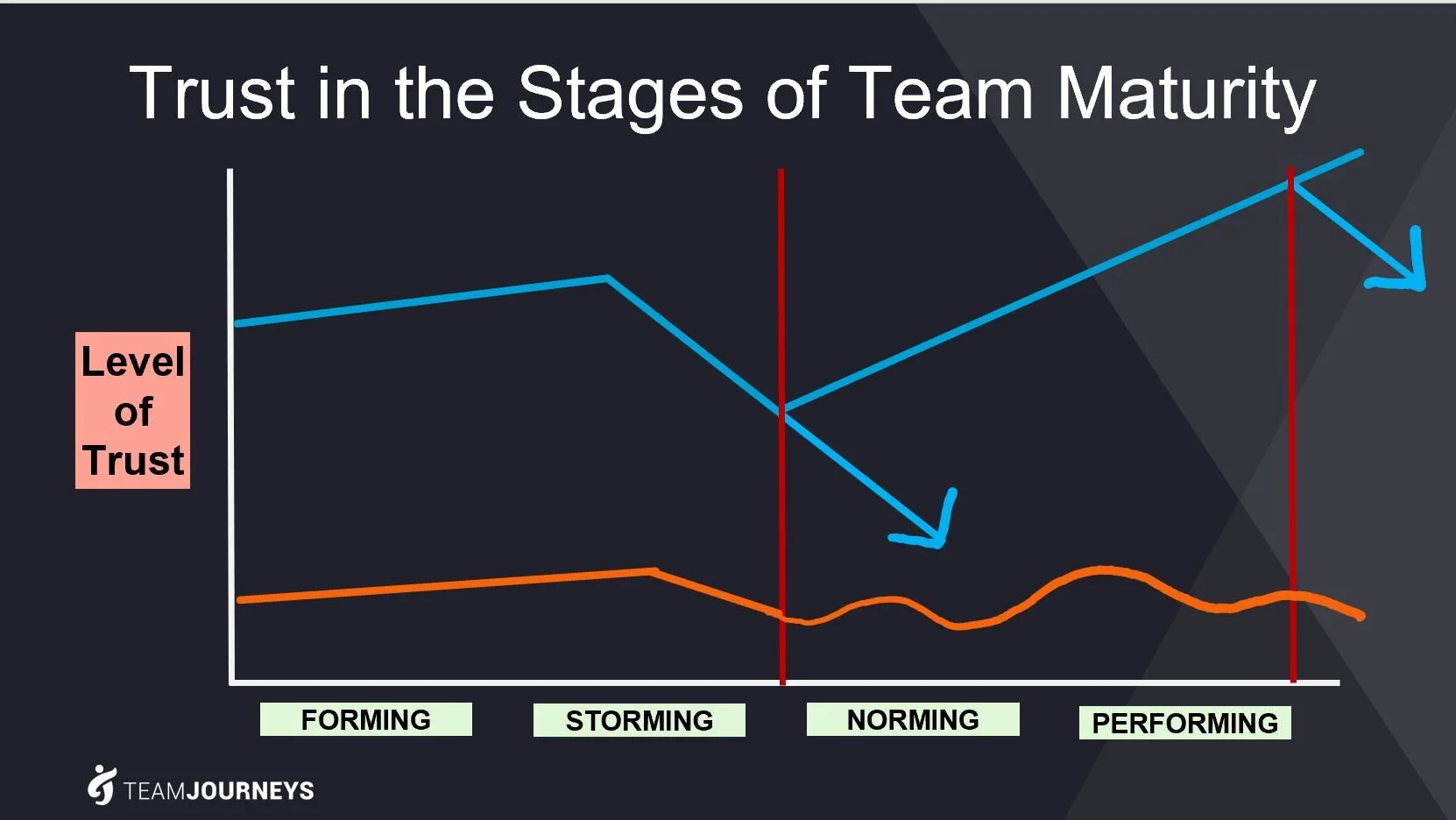Deconstructing TRUST in Teams
Our analysis of data from Tuckman’s Assessment on Stages of Team Maturity (N = 169) showed that though most teams are in the Performing stage (45%), the items related to trust are still the lowest rated. This means that in general, individuals who took our assessment perceive trust to not always be present, no matter if their teams are in the Performing Stage or not. Trust seems to be an issue for all – it’s worth deconstructing the topic and looking into “trust issues” in teams.
The following information were shared during our November 27, 2019 learning session in BGC, Taguig. This is the 3rd in our Learning Series on different topics related to team development.
What is “trust” in teams?
The classic definition of trust is based on interpersonal relationships. In these situations, trust is an individual’s willingness to be vulnerable to another based on the belief that the other is competent, open, concerned, and reliable (Mishra, 1992 from Erdem & Ozen, 2003).
In a team setting, this becomes more complex. Team Trust is collective. Each team members’ ability to be trustworthy and propensity to trust others influence the overall presence of trust in the team.
What does trust look like in each of the Stages of Team Maturity?
The blue line shows the level of trust mapped against the Stages of Team Maturity. In this condition, the team started with some level of trust in the Forming Stage that allowed them to progress through the 4 stages.
The orange line shows a team that started with little to no trust. In this condition, a team is unable to get through conflict in the Storming Stage. A roller coaster of emotions is to be expected as the team continues to work together.
The red lines show the barriers to trust that will make or break the team.
In the Forming Stage, trust level is AVERAGE
Members are extra considerate to those around them. Because goals are not yet well-defined, there are not a lot of constraints that limit individual members from expressing their own styles and preferences.
In the Storming Stage, trust level is LOW
Constraints and rules start to manifest; thus, individual expressions and motivations are stifled. Conflicts may arise because of this.
The first barrier to trust exists in between Storming and Norming. This implies that the conflict in Storming Stage can be channeled towards trust-building conversations and identification of behaviors that support trust-building.
In the Norming Stage, trust level is on an UPWARD TREND
Now that ways of working are identified, trust can be practiced and applied in these processes.
In the Performing Stage, trust level is HIGH
Members can communicate more freely and openly. Increased familiarity with each other’s strengths, beliefs, and motivations also facilitate smoother working conditions.
A second barrier exists after the Performing Stage. This is when teams have already achieved their set goals and are at a decision point – is it time to disband, stay the course, or shoot for bigger goals? This creates a potential for conflict because a change is about to happen, and members are again required to adjust.
What can I do to build trust in my team?
Hire for talent with a propensity for competence and benevolence. Use behavioral-based interviewing to probe into a candidate’s past behavior around these competencies (for example, “Tell me about a time you went out of your way to help a colleague.”) Hiring for “trustworthiness” will help you have competent and benevolent individuals more likely to be motivated to work towards trust in your team.
Start the conversation about trust. Be explicit that you want to talk about this and work on it. This awareness will encourage everyone to contribute to observing and practicing trust-building behaviors and mindsets.
Focus on brainstorming and debrief sessions. These are two of the meetings that involve the most conversation – and thus, also have the greatest potential for conflict. If you and your team can create an environment of trust in these sessions, you are on your way to having trust in any kind of interaction.
Do “teambuilding” everyday. Thank your team members when they exhibit trust-building behaviors and encourage feedback when they engage in destructive behaviors. Use moments – no matter how big or small - as an opportunity to build trust.
Start your team’s journey to high-performance! Take our Team Maturity Test at
https://www.teamjourneys.com/discover
Sources:
Curşeu, P. L., & Schruijer, S. G. (2010). Does conflict shatter trust or does trust obliterate conflict? Revisiting the relationships between team diversity, conflict, and trust. Group Dynamics: Theory, Research, and Practice, 14(1), 66.
Erdem, F., & Ozen, J. (2003). Cognitive and affective dimensions of trust in developing team performance. Team Performance Management: An International Journal, 9(5/6), 131-135.
Pelegrini Morita, P., & Marie Burns, C. (2014). Trust tokens in team development. Team Performance Management, 20(1/2), 39-64.

